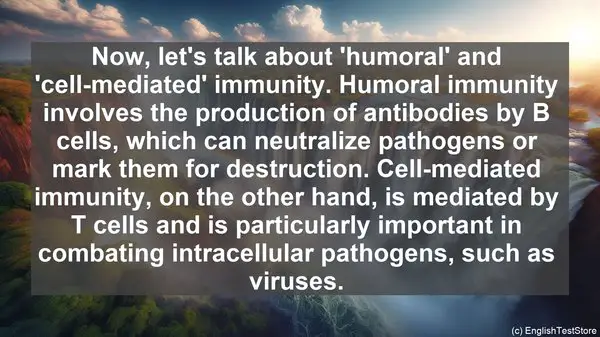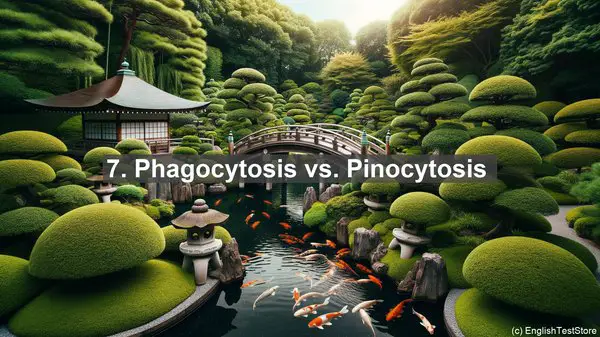Introduction
Welcome to our clinical immunology class. Today, we are going to discuss the top 10 commonly confused words in this field. Understanding these words correctly is crucial for a solid foundation in clinical immunology. So, let’s get started!

1. Allergen vs. Antigen
The first pair of words that often cause confusion is ‘allergen’ and ‘antigen.’ While both terms refer to substances that can trigger an immune response, there is a slight difference. An allergen is a substance that causes an allergic reaction, whereas an antigen is any substance that can stimulate an immune response, including both harmful and harmless ones.
2. Sensitivity vs. Specificity
Next, we have ‘sensitivity’ and ‘specificity.’ These terms are commonly used when discussing diagnostic tests. Sensitivity refers to a test’s ability to correctly identify individuals with a particular condition, while specificity measures its ability to correctly identify those without the condition. In simple terms, sensitivity is about minimizing false negatives, while specificity focuses on reducing false positives.
3. Innate vs. Adaptive Immunity
Moving on, let’s clarify the difference between ‘innate’ and ‘adaptive’ immunity. Innate immunity is the body’s first line of defense, providing immediate, non-specific protection against pathogens. On the other hand, adaptive immunity is a more targeted and specific response that develops over time, providing long-term protection. Both types of immunity are crucial for overall immune function.
4. Autoimmunity vs. Immunodeficiency
Now, let’s talk about ‘autoimmunity’ and ‘immunodeficiency.’ While they both involve issues with the immune system, they are opposite conditions. Autoimmunity occurs when the immune system mistakenly attacks the body’s own cells and tissues, leading to various diseases. Immunodeficiency, on the other hand, refers to a weakened or impaired immune system, making individuals more susceptible to infections.
5. Hypersensitivity vs. Tolerance
The terms ‘hypersensitivity’ and ‘tolerance’ are often used when discussing immune responses. Hypersensitivity refers to an exaggerated or overactive immune response, which can lead to allergies or autoimmune conditions. Tolerance, on the other hand, is the immune system’s ability to recognize and tolerate harmless substances, preventing unnecessary reactions.
6. Cytokines vs. Chemokines
Next, let’s differentiate between ‘cytokines’ and ‘chemokines.’ Both are signaling molecules involved in immune responses, but they have different roles. Cytokines are involved in cell communication and regulation of immune responses, while chemokines specifically attract immune cells to the site of infection or inflammation.
7. Phagocytosis vs. Pinocytosis
When it comes to cellular processes, ‘phagocytosis’ and ‘pinocytosis’ are often mentioned. Phagocytosis is the engulfing and digestion of solid particles by cells, usually to eliminate pathogens. Pinocytosis, on the other hand, is the process of taking in fluid or dissolved substances. Both processes play important roles in immune cell function.
8. Primary vs. Secondary Immune Response
Let’s discuss the difference between the ‘primary’ and ‘secondary’ immune response. The primary response occurs when the immune system encounters an antigen for the first time. It takes time for the immune system to mount a response, and the initial antibodies produced are usually of lower affinity. In contrast, the secondary response occurs upon re-exposure to the same antigen. It is faster, more robust, and produces antibodies of higher affinity.

9. Humoral vs. Cell-Mediated Immunity
Now, let’s talk about ‘humoral’ and ‘cell-mediated’ immunity. Humoral immunity involves the production of antibodies by B cells, which can neutralize pathogens or mark them for destruction. Cell-mediated immunity, on the other hand, is mediated by T cells and is particularly important in combating intracellular pathogens, such as viruses.
10. Prophylaxis vs. Therapy
Lastly, let’s clarify the difference between ‘prophylaxis’ and ‘therapy.’ Prophylaxis refers to preventive measures taken to avoid a disease or infection. It can include vaccination, the use of protective equipment, or lifestyle changes. Therapy, on the other hand, is the treatment given after the onset of a disease to alleviate symptoms, cure the condition, or manage it effectively.
